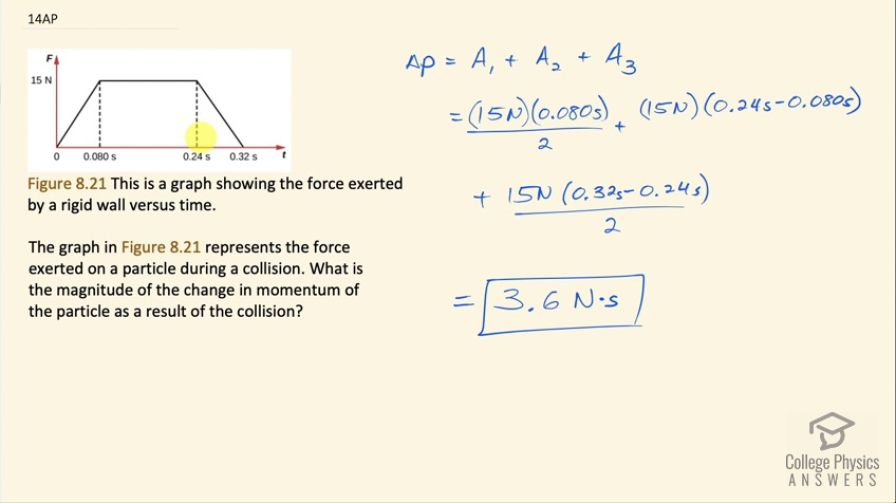Question
The graph in Figure 8.21 represents the force exerted on a particle during a collision. What is the magnitude of the change in momentum of the particle as a result of the collision?
Final Answer
Solution video
OpenStax College Physics for AP® Courses, Chapter 8, Problem 14 (Test Prep for AP® Courses)

vote with a rating of
votes with an average rating of
.
Calculator Screenshots
Video Transcript
This is College Physics Answers with Shaun Dychko. This graph is showing us how the force on an object changes with time and our job is to figure out what the change in momentum is as a result of this force exerted for some time. So this is the impulse in other words— that's what change in momentum means is impulse— and it's going to be the area under this curve and so we can break it up into a triangle, we'll call that area one— that's this section here in yellow— and then we'll have area two, which will be this rectangle in blue and then we'll have area three over here. Okay! So we have 15 newtons, which is the height of this triangle multiplied by its base which is 0.080 seconds long and divide by 2 because base times height divided by 2 is the area of a triangle. Then we'll add to that the area of this rectangle and it has a height of 15 newtons and a base of 0.24 seconds minus 0.080 seconds and then we add to that the area of triangle three and that's 15 newtons times 0.32 minus 0.24 seconds all divided by 2 and this is 3.6 newton seconds. You could also write the units kilograms meters per second, which would be equivalent— strictly speaking— but newton seconds is a more traditional way of expressing an impulse whereas kilogram meters per second is the traditional unit for momentum.
